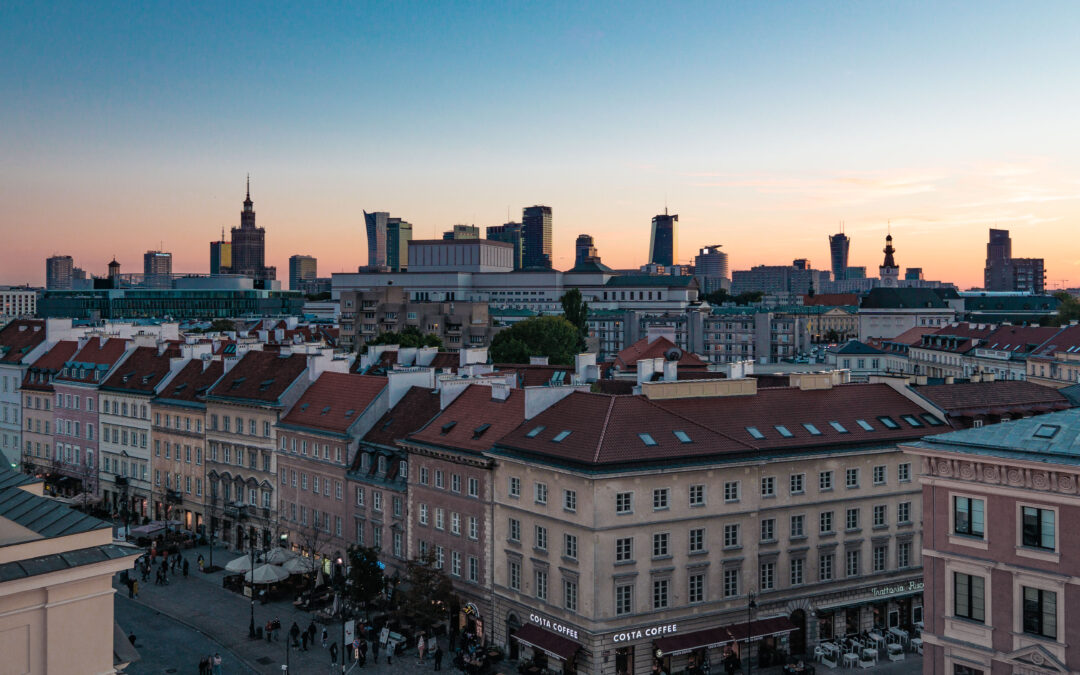The number of residents registered as living in Warsaw has fallen by 12,000 since last year and by 18,000 since before the pandemic, figures from the city’s registry office (USC) show.
The largest drops have been recorded in central districts of the city, while some more remote areas have seen increases. This may indicate that people are being priced out of the centre, that the pandemic has made it less attractive, or that they are seeking areas where facilities – especially for families with children – are better.
The USC’s data show that in January this year 1.625 million people lived in Warsaw, a 12,000 drop over the past year and 18,000 down on January 2020, reports Gazeta Wyborcza.
The largest falls were recorded in the two central districts of Mokotów (down by 2,693) and Sródmieście (down by 2,435) followed by the northern district of Bielany (by 2,204).
Other districts to shrink were Targówek (by 1,491), Praga Połnoc (1,256) and Praga Południe (1,763) on the right bank of the Vistula and Bemowo (962), Wola (1,366), Ochota (799) and Ursynów (895) on the left bank.
According to data from Emmerson Evaluation, a real estate valuation company, residential costs were highest in these districts in the third quarter of 2021. The average price for a square metre of new flats and houses was 19,500 zloty (€4,330) in Sródmieście, 16,300 zloty in Wola, 15,800 zloty in Ochota, and 14,400 zloty in Mokotów.
This suggests residents are being priced out of the well-connected and culturally rich central areas, according to Gazeta Wyborcza. The newspaper also notes that central districts can lack facilities for children, such as playgrounds, and schools tend to have older infrastructure than newer institutions built in more remote districts.
Moreover, many of the restaurants, shops and cultural venues that made central districts more attractive were forced to close due to the pandemic.
Meanwhile, a number of large districts located further from the city centre have been expanding. The largest population increases were recorded in the northernmost Białołęka, which grew by 2,014 people.
Rises were also registered in the south-eastern Wawer (by 486), the southern Wilanów (495) and the south-western Ursus (344) districts. The central district of Żoliborz has reversed its gradual depopulation trend of past years and grew by 340 people.
Most of these were among the districts with the lowest real estate prices, according to Emmerson Evaluation, including Wawer (8,800 zloty, or €1,955, per square metre in the third quarter of 2021) and Białołęka (both 9,000 zloty).
Warsaw has announced plans to build a third line of its metro system.
The first stage will see six new stations built on the right (east) bank of the Vistula, connecting Praga-Południe, the city's second-largest district, with the centre https://t.co/bM1KRylzVY
— Notes from Poland 🇵🇱 (@notesfrompoland) March 15, 2021
The official number of residents matters in so far as it is used to allocate seats to municipal districts in the communal council. Districts with more than 100,000 residents are granted 25 seats and have a five-person leadership, while smaller ones receive 23 seats and a three-person leadership.
Aleksander Ferens, mayor of Śródmieście, argues that a problem is not necessarily depopulation, but the fact that people often do not officially register where they actually live.
He estimates that, before the pandemic, up to 140,000 people would stay overnight in his district, but the number of registered residents, 94,707, now places it in the smaller league.
A proposal to turn Warsaw's Plac Zbawiciela into Poland's largest open-air cafe has been made by @MiastoJestNasze.
The capital's deputy mayor has, however, criticised the ideahttps://t.co/T7tHGkwuei
— Notes from Poland 🇵🇱 (@notesfrompoland) May 14, 2021
Main image credit: heroix/Flickr (under CC BY-SA 2.0)

Maria Wilczek is deputy editor of Notes from Poland. She is a regular writer for The Times, The Economist and Al Jazeera English, and has also featured in Foreign Policy, Politico Europe, The Spectator and Gazeta Wyborcza.




















